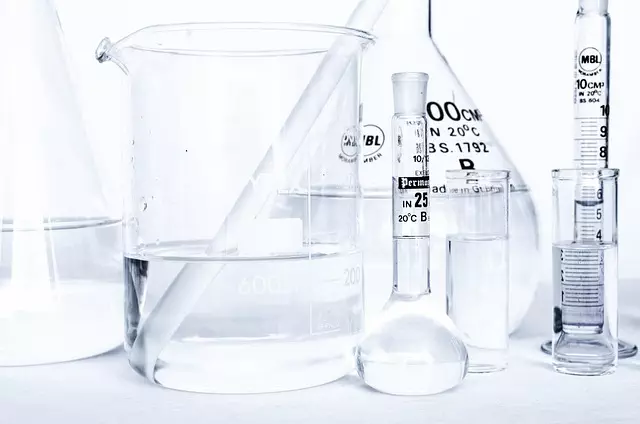Thigh fat complexity arises from anatomical variations and diverse contributing factors, including genetics, hormones, lifestyle, and health conditions. Non-invasive fat reduction techniques like laser, cryolipolysis (CoolSculpting), ultrasonic fat destruction, and radiofrequency treatments offer effective solutions without surgery. Targeted liposuction provides precise results for sculpted thighs. Combining these procedures with healthy diet, exercise, hydration, and rest optimizes outcomes. Advanced technologies like CoolSculpting, laser, and HIFU enable targeted contouring without downtime. Post-treatment care includes cleanliness, moisture, mild exercises, and balanced diet to ensure long-term success.
Thigh fat can be a persistent challenge, but there are effective fat reduction solutions available. Understanding the unique anatomy of thigh fat and its underlying causes is crucial before exploring various non-invasive techniques like CoolSculpting, Laser, and HIFU treatments. For more targeted approaches, liposuction offers specific benefits, but it’s not always necessary—diet and exercise play a vital role post-treatment. This comprehensive guide navigates the landscape of thigh fat treatments, ensuring you’re informed about the best options for achieving desired results.
Understanding Thigh Fat: Anatomy and Causes of Excess Fat Deposition

Understanding Thigh Fat involves delving into its anatomical complexity. The thigh area is composed of various muscle groups, including quadriceps and hamstrings, alongside a layer of subcutaneous fat. Excess fat accumulation in this region can stem from multiple factors. Genetic predisposition plays a significant role, influencing where the body stores fat. Age and hormonal changes, such as those during puberty, menopause, or pregnancy, can also contribute to increased fat deposition. Lifestyle habits, including diet and exercise routines, are crucial considerations in Fat Reduction Solutions for the thigh area. Inadequate calorie management and lack of physical activity often lead to surplus fat build-up.
The causes of excess fat deposition in thighs aren’t limited to lifestyle choices; they include sedentary lifestyles, certain medications, and medical conditions like hypothyroidism or insulin resistance. These factors can disrupt the body’s natural balance, promoting fat storage over metabolism. Recognizing these underlying causes is vital when exploring Fat Reduction Solutions, as it allows for tailored approaches that address specific needs and circumstances.
Non-Invasive Fat Reduction Techniques: A Comprehensive Overview

Non-invasive fat reduction techniques have gained significant popularity in recent years, offering effective fat reduction solutions without the need for surgery or extensive downtime. These methods leverage advanced technologies to target and eliminate stubborn fat cells, leading to a more sculpted and toned appearance. One such technique is laser-assisted fat reduction, where low-level lasers are used to break down fat cell walls, making fat more susceptible to removal by the body’s natural processes. Another popular option is cryolipolysis, commonly known as CoolSculpting, which uses cold temperatures to freeze and destroy fat cells, resulting in a gradual reduction in targeted areas.
Ultrasonic fat destruction is yet another non-invasive procedure that employs high-frequency sound waves to heat and disrupt fat cells. This method promotes collagen production, improving skin texture and elasticity. Additionally, there are various radiofrequency (RF) treatments available, which stimulate collagen growth while providing gentle heating to the targeted fat areas. These non-invasive fat reduction solutions are safe, effective, and suitable for most individuals seeking to reduce subcutaneous fat without undergoing invasive procedures.
Targeted Liposuction: When and Why It's the Right Choice for Your Thighs

Targeted liposuction is a popular fat reduction solution for those seeking to contour their thighs and achieve a slimmer, more defined look. It’s a minimally invasive procedure that involves using a thin needle to break up and suction out fat cells from specific areas, like the inner and outer thigh. This method is ideal when diet and exercise alone haven’t provided the desired results, targeting problem areas where fat tends to accumulate and be stubbornly persistent.
This technique offers several advantages. It provides precise control over the treatment area, allowing for a more tailored approach. Additionally, liposuction can enhance the overall aesthetic of the thighs by smoothing out curves and improving the silhouette. Many individuals choose this option as a non-surgical alternative to more extensive body contouring procedures, offering a quicker recovery time and minimal downtime.
The Role of Diet and Exercise in Achieving Optimal Results After Treatment

After undergoing any fat treatment, be it a non-invasive procedure or a surgical option, maintaining a healthy diet and regular exercise routine is paramount to achieving and sustaining optimal results. Fat reduction solutions often yield the best outcomes when paired with a balanced approach to nutrition and physical activity. A calorie-controlled diet, rich in lean proteins, whole grains, fruits, and vegetables, can help manage weight and promote fat loss. Incorporating both cardiovascular exercises and strength training is also key; cardio helps burn calories, while resistance training builds muscle, which increases metabolism and aids in long-term fat reduction.
Additionally, maintaining hydration levels and getting adequate rest are essential components of a holistic approach to post-treatment recovery. By combining these lifestyle factors with any recommended follow-up treatments or maintenance plans, individuals can ensure their bodies are supported in achieving and maintaining their desired figure.
Advanced Technologies: CoolSculpting, Laser, and High-Intensity Focused Ultrasound (HIFU) Treatments

In the realm of fat reduction solutions, advanced technologies have revolutionized the way we address problem areas like the thighs. CoolSculpting, for instance, is a non-invasive treatment that uses cryolipolysis to freeze and eliminate fat cells. This process targets specific areas without damaging surrounding tissues or requiring downtime.
Additionally, laser treatments and High-Intensity Focused Ultrasound (HIFU) offer precise and effective fat reduction. Laser technology heats up the targeted fat cells, causing them to break down and be eliminated by the body’s natural processes. HIFU, on the other hand, uses high-intensity ultrasound waves to destroy fat cells at a cellular level, leading to noticeable results over time. These modern treatments provide non-surgical alternatives for those seeking improved contouring in their thighs without the drawbacks of traditional procedures.
Post-Treatment Care and Maintenance: Tips for Longevity of Results

After undergoing any fat reduction solutions, including targeted treatments for the thighs, proper post-care and maintenance are essential to ensure optimal results. The first few days following treatment may involve some temporary redness or mild swelling, so keeping the treated area clean and moisturized is crucial. Avoid strenuous activities or intense workouts during this period to prevent irritation.
To promote longevity of results, consider incorporating a balanced diet rich in nutrients into your routine. Staying hydrated, maintaining a healthy weight, and engaging in regular light exercises can help solidify the outcomes. Additionally, be mindful of any product interactions or potential allergens; consult with your healthcare provider for personalized advice on post-treatment care to sustain your desired results over time.



